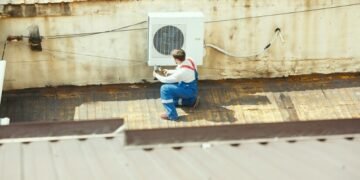With home heating costs up by around 30%, there’s never been a better time to invest in insulation. When you stay on top of your home’s weatherization, you can score lower utility bills. Plus you’ll feel more comfortable.
Read on to learn 5 things you need to know about insulation installation!
1. Know Where Insulation Should Go
Are you looking at wall insulation? Or is attic insulation the better option? You could even add insulation between floors or near your roof.
Remember that insulation serves as a mechanism to slow down heat transfer. In other words, insulation can keep out hot air in the summer, and keep in warm air from your furnace during the winter. If possible, look into adding insulation to all of the above areas to get the most impact.
2. Consider Insulation Options
Not all insulation is the same, and the location of installation may determine the type. For instance, reflective foil insulation is best suited to roofs. Batts and rolls are easier to install if you’re taking on an attic insulation project yourself.
On the other hand, foam board panels can fit in most spaces. And blown in insulation may require a professional to help. They will have the proper equipment to tackle the insulation installation.
3. Seal Your Home Before Insulation Installation
Simply adding insulation to your home may not fix underlying issues, such as gaps or holes where air can enter the home. That’s why it’s critical to grab an all-purpose latex caulk and get to work! Do this before adding insulation.
Seal around your baseboards and in your attic. Then go outside and look for gaps between your sill plate and foundation. Apply caulk to ensure that air cannot gain access to any visible cracks.
4. Blown In Insulation Offers an Easy Choice
Blown insulation offers one of the more convenient and effective choices. Unlike batts, which come in layers, blown in insulation sits loosely in the space where it is installed.
This means that with blown in insulation, you might not need to worry as much about sealing your home. As it moves into place, it can help cover small gaps or cracks. It’s also faster to install!
5. Understand Insulation Prep and Safety
You’ll need a ladder to access your attic or the wall spaces where insulation will go. You’ll also need safety goggles, gloves, and a dust mask.
You may be accessing high, small, and potentially hot spaces. Because of this, you’ll want to protect your extremities from dust and splinters.
And if you’re not confident you can do insulation installation properly, turn to an insulation contractor. They’ll know how to eliminate gaps between insulation batts and maneuver around ventilation. They’ll also know how and where you should install insulation for maximum results!
Find the Insulation Solution You Need
Insulation installation requires understanding which type of product is best. You’ll also need to determine where the insulation should go — and whether you have the understanding to install it yourself. A professional installer is your best bet for a safe and effective installation process.
Need more ideas to improve your home? Check back for new articles!










